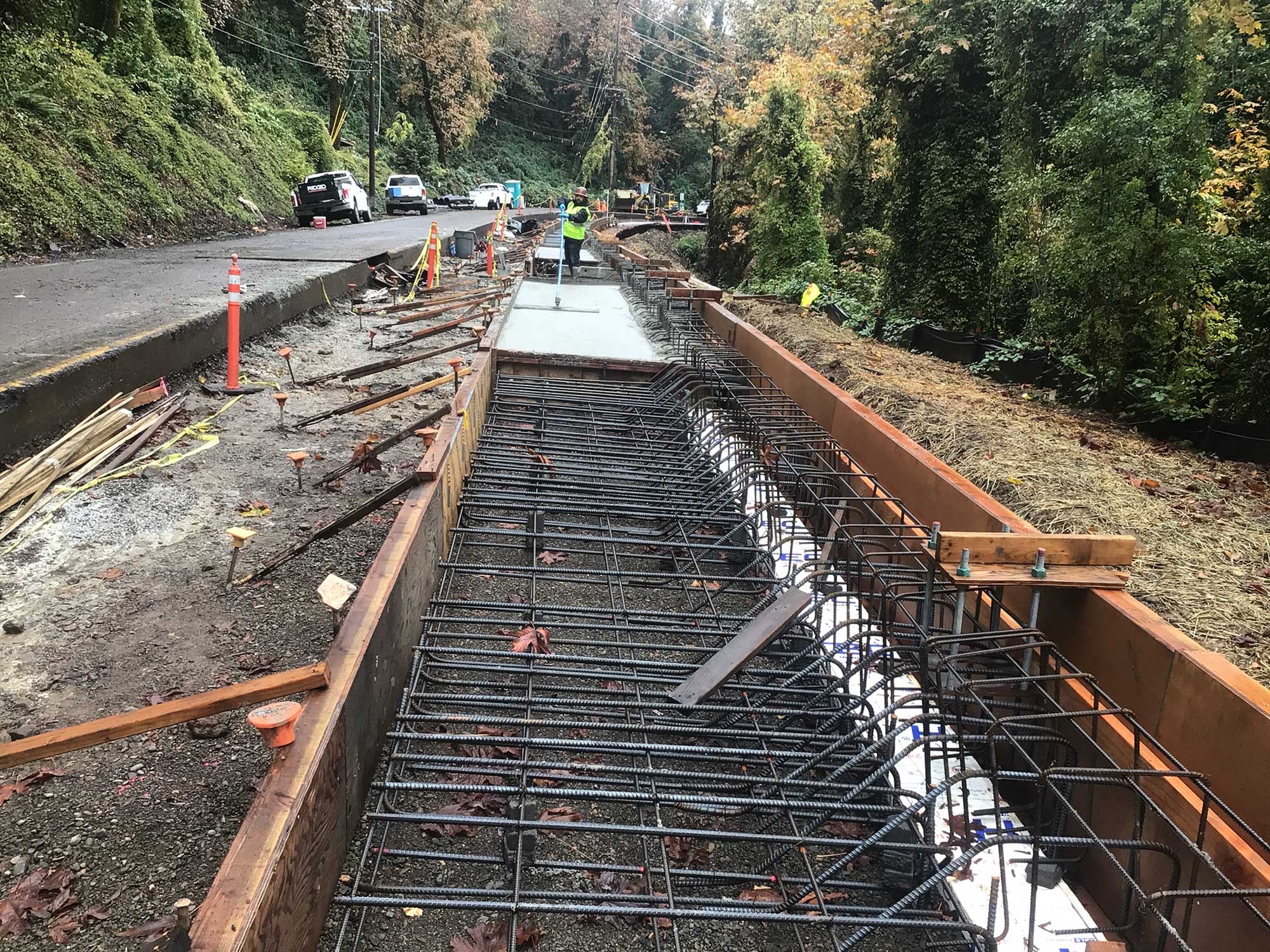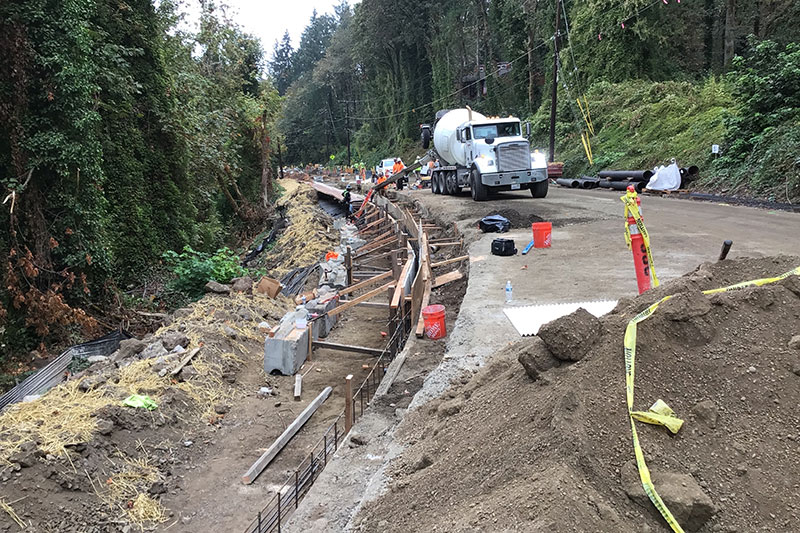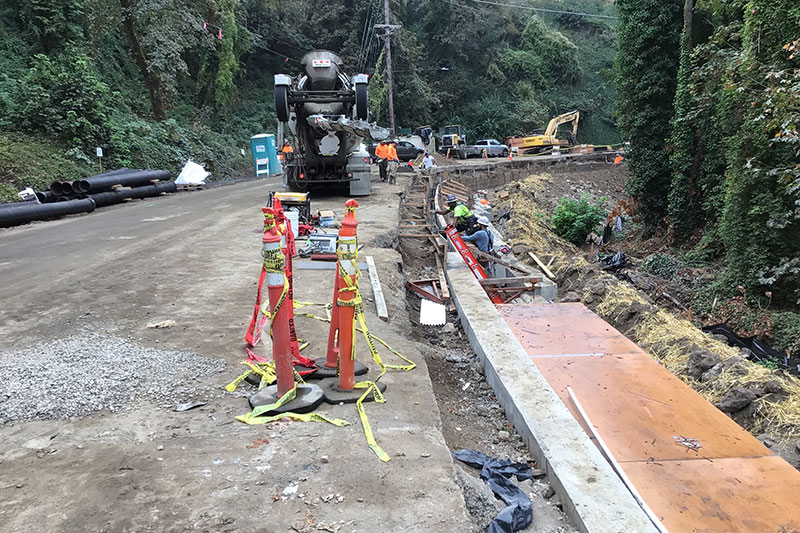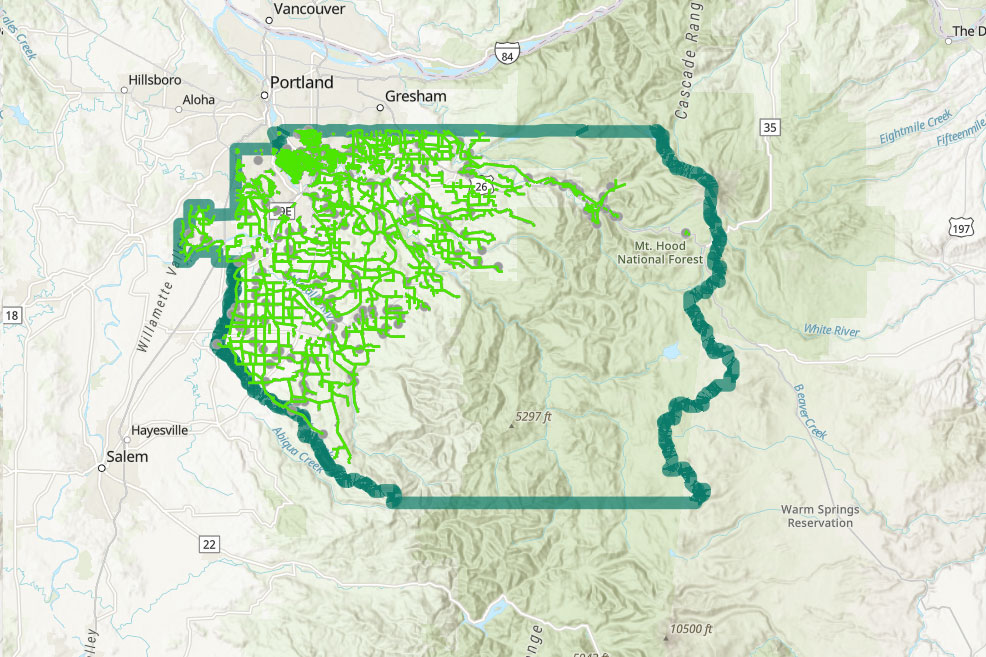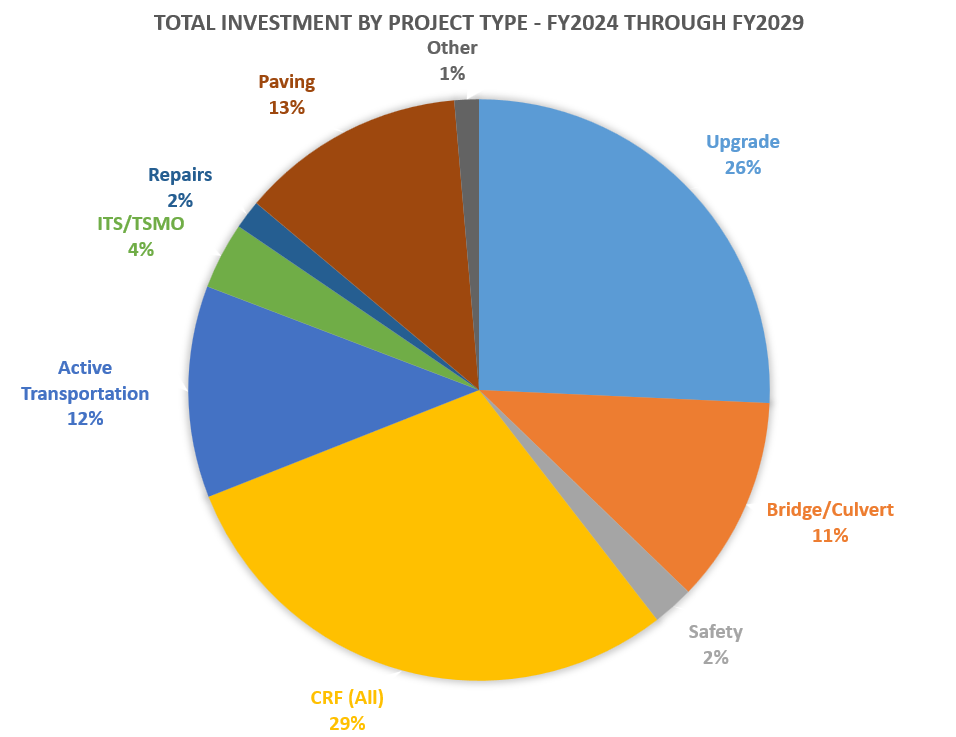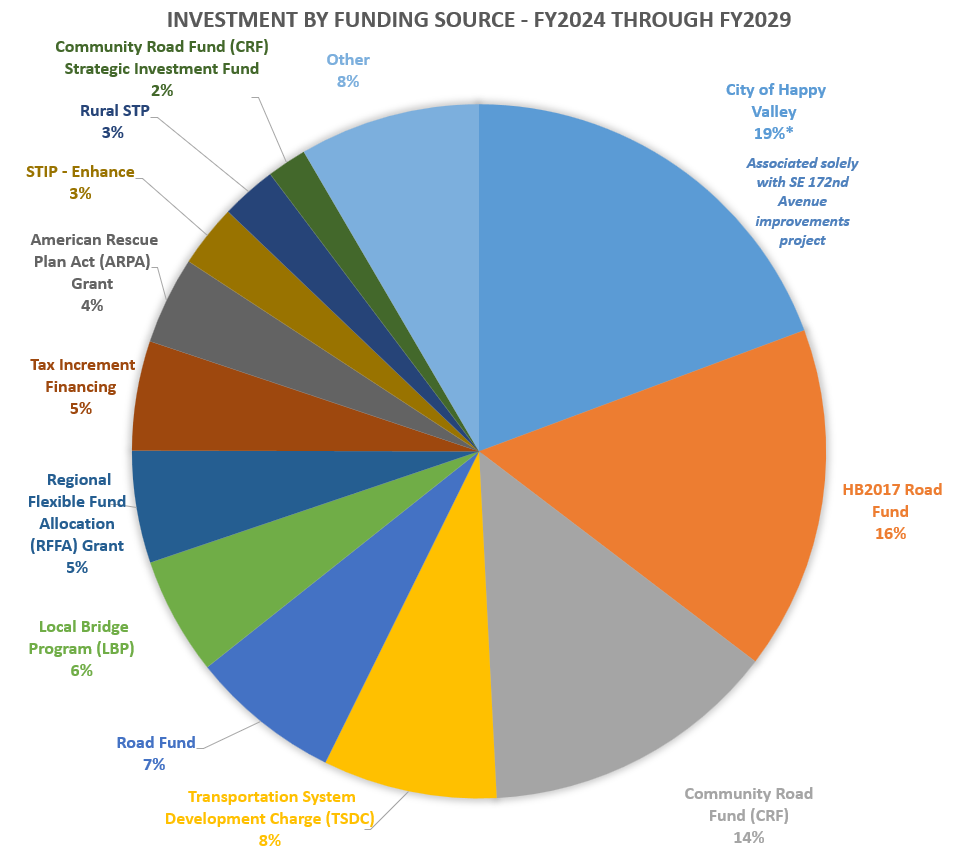S. Ivy St. Pedestrian Intersection Improvements
Widening roadway to a consistent three lanes and adding bike lanes and sidewalks on both sides from 99E to Lee Elementary School. A yellow and red flashing signal will also be installed at the intersection of Ivy St and Township Road. Signal will be activated to green-yellow-red phases when future traffic demand warrants signal. Fully accessible curb ramps will be constructed at intersection corners, as well as stormwater facility upgrades that will provide improved drainage for the roadway and treatment of stormwater runoff.
Construction
Updated: June 25, 2024
South Ivy Street connects downtown Canby to schools, parks, and surrounding residential neighborhoods. As an important connection, it is crucial that this road serve vehicles, bicyclists and pedestrians. Our goal is to construct a complete street, creating a linked network of sidewalks and bike lanes giving bicyclists and pedestrians of all ages access to local businesses, schools, parks, and nearby neighborhoods.
Through a collaborative effort between the community, city and county, multiple alternatives to improve South Ivy Street were evaluated. The final project will safely accommodate existing traffic growth, minimize impacts to adjacent properties and parking, and make South Ivy a more walkable and complete street.
Why
To provide a safe route for bikes and pedestrians along Ivy St. and provide a traffic signal at the intersection of Ivy St. and Township Road.
Schedule
- Utility Relocation: July 23 – Spring 2024
- Design: Sept. 2019 – Jan. 2024
- Right of way: Nov. 2020 – May 2024
- Construction: June 2024 – Dec. 2025
Things to be aware of
- Expect flagging and lane closures for vehicles and bicycles daily during construction between SW 1st Ave (Hwy 99E) and SW 11th Ave. Local access to driveways will be maintained. Pedestrian access will be provided. Please slow down and use caution near the work zone.
- Canby Utility is moving power underground and adding street lighting. Expect crews to be onsite through spring 2024. While weekend and night work is not planned, it may be needed for the utility relocation work. Traffic flaggers will direct travelers through lane closures. Please slow down and be mindful in the work zone. Thank you for your patience as we work to complete this project as quickly and safely as possible.
Funding
- Project estimate is $7 million
- Funding is provided from State Funded Local Projects funds, County Road Funds and City of Canby funds.
 Translate
Translate







